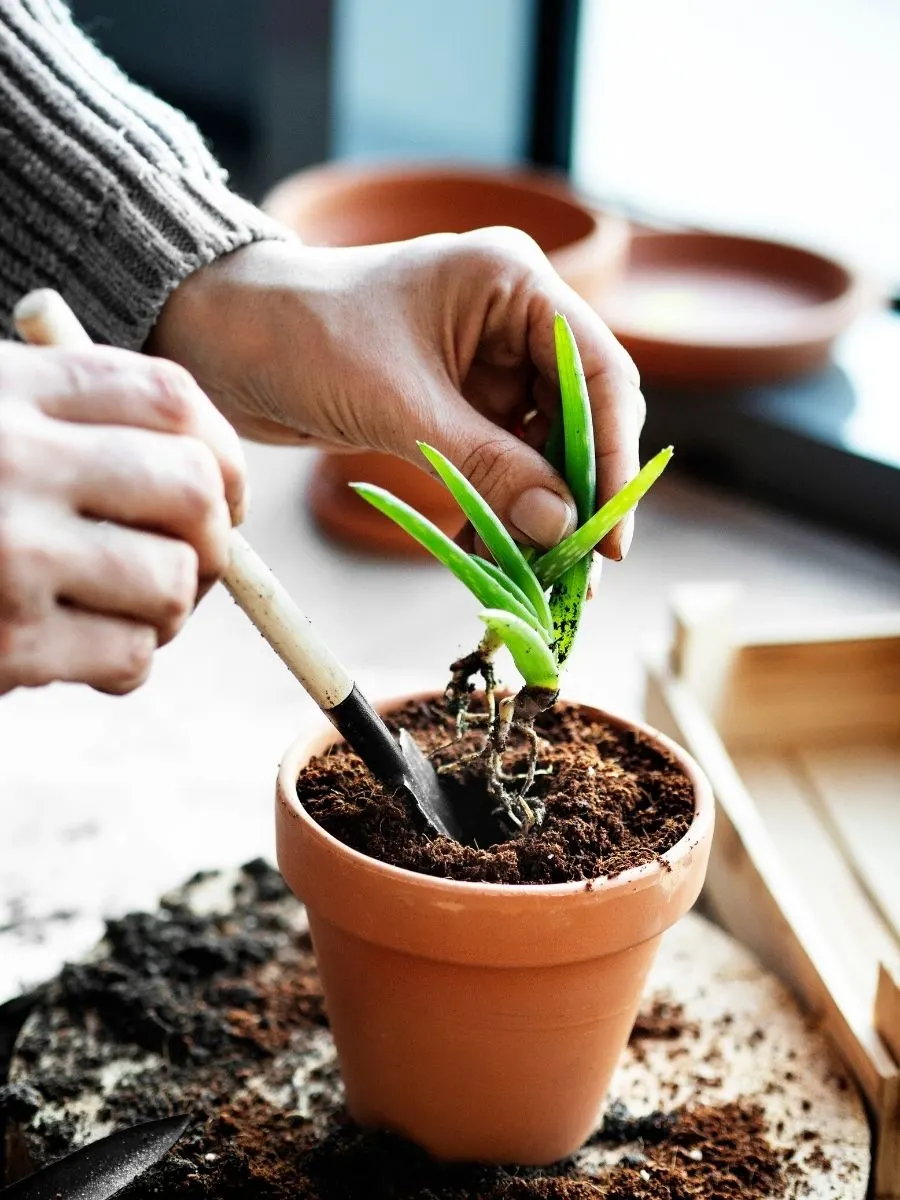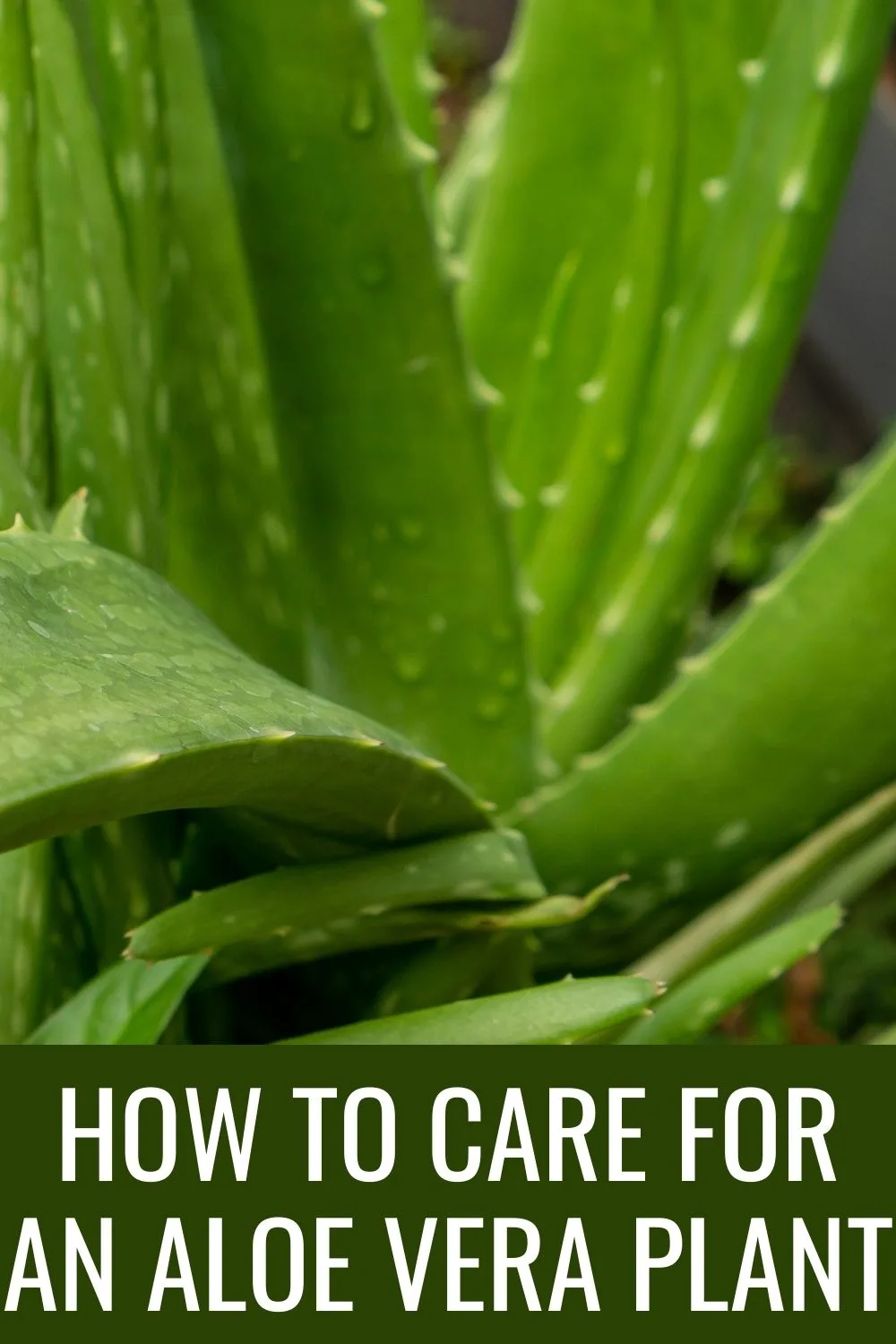Aloe vera is a beautiful landscape plant that beautifies landscapes in Mediterranean climates around the world, but they also make cool houseplants. Learning how to care for an aloe vera plant couldn’t be easier.

Aloe vera is also a useful plant for medicinal purposes that no home should be without.
Anyone can grow aloe. In this article, we will tell you everything you need to know about growing aloe as a flowering ornamental or as a medicinal plant. we’ll start with the basics.
The Basics for Growing Aloe Vera at Home
It is very easy to grow aloe vera plants. In fact, the biggest problems you will have with any kind of aloe plant come from giving it too much attention,
Most of the 500-plus species of aloe originated on the dry desert Mediterranean shores of North Africa, but Aloe vera hails from the Arabian peninsula. Saudi Arabia, as you probably know, is mostly desert. This means that the most important thing to remember about keeping your aloe vera plants healthy is to treat them like desert plants.
But that doesn’t mean that you should ever expose your aloe plants to blast furnace heat. Aloe vera plants need conditions like the cooler, higher-altitude deserts of Saudi Arabia.
Aloe vera grows best in loose, freely draining soil
Be sure your aloe vera’s pot has a drainage hole in the bottom. Place some lava rocks in the bottom of the pot to make sure its roots never stand in water that accumulates in the dish underneath the pot.
Plant your aloe in a potting mix that is at least 1/3 coarse sand, with coconut fiber and compost for the rest. Use a terracotta pot for all of your aloe plants, because it dries faster than plastic or ceramic containers.
Give your aloe plant a thorough soaking about every two weeks
This cycle imitates the summer rains of its native Saudi peninsula. Water your plant from the bottom, not the top. The leaves of your aloe vera plant need to stay dry.
Aloe vera thrives in bright but indirect sunlight
In locations where aloe is cultivated for making aloe bitters for laxatives, like Barbados and the Rio Grande Valley of Texas, fields of aloe grow without shade.
If you want an attractive houseplant, however, grow your aloe vera plant in bright, indirect light. Every kind of aloe needs abundant light to thrive, but too much light can give a potted aloe plant sunburn.
Don’t expose your aloe plants to a severe freezing cold
They can come back after their leaves have been killed by a frost, but they cannot survive having their roots frozen. If you live anywhere north of USDA Hardiness Zone 11, you will need to take your aloe plant indoors in the winter. It will still need bright sunlight all winter long.
Propagating aloe vera

And just a word about propagation. You never have to run to the garden shop to buy more aloe plants when you have at least one healthy plant at home.
Aloes produce “pups” that you can separate from the crown of the mother plant once they have grown their own root system. You can also grow aloe from seed, but save that for exotic, flowering aloes to beautify your landscape.
How to Harvest Aloe Vera
Although aloe vera is a beautiful houseplant, the fact is, most people keep aloe vera for home healing use. You harvest the gel from the leaves of the plant.
Aloe vera leaves are long with jagged edges and a slight curve. You will find the healing gel inside them.
Use a clean, sharp knife or kitchen scissors to cut a bottom leaf from the base of the plant. Don’t cut into the crown of the plant, where the roots are attached, but take a leaf as close to the crown of the plant as possible.
Place the leaf cut side down into a small, clean container, like a glass or a coffee cup. A yellow sap will flow out. Let the sap collect in the bottom of the container for 10 to 15 minutes, and then use it for treating burns, cuts, scrapes, or skin inflammation.
Aloe vera sap relieves inflammation and irritation, but it isn’t really medicinal. Seek medical advice for skin infections.
What about making your own aloe vera juice? The important thing to remember about making aloe vera juice is that the sap of the leaf is a strong laxative. Drain out the sap the same way you collect it for healing use, and then place the drained leaves and some water in a blender.
Now, let’s go over some of the little-known facts about aloe that reveal it is even more useful and beautiful than you probably know.
Get to Know Aloe Vera
Aloe vera, or “true aloe,” is both the scientific name and the common name for a particular species of aloe that is often kept in homes as an easy to care for houseplant, but also as a source of sap for treating cuts, scrapes, and minor burns.
This aloe is just one of over 560 kinds of aloe. And the good news about growing your own aloe vera plant at home is that the only way to go wrong with this plant is to try too hard.
How To Care for An Aloe Vera Plant – FAQs
Should I cut the brown tips off my aloe plant?
If you see brown or pink tips on an aloe leaf, lop off the entire leaf with a sterilized kitchen knife, a sterilized pruning knife, or, if it is a very large leaf, sterilized pruning shears. Brown leaves are dying, and only drain energy from the healthy parts of the plant. Aloe sap will heal its own wound, and eventually, a new leaf will grow in its place.
Why do aloe leaves sometimes turn brown?
Aloe leaves turn pinkish-brown when the plant gets sunburned. Browning of the leaves can occur when the root system gets excess water, or when the soil in the bottom of the pot forms a hard layer that trips water above it. Soggy soil around your aloe plant provides an incubator for the bacteria that cause root rot, too.
If you have a habit of overwatering your aloe plants, at least try repotting them in larger pots, stirring in some coarse sand to the soil mix, about 1/3 of the volume of the pot, to the potting mix. A small pot tends to get waterlogged unless the bottom of the pot is filled with lava rock.
Does an aloe vera plant need sunlight?
An important thing to remember about aloe vera plant care is to give your aloe plant enough sunlight, but not too much. Indirect sunlight is best, especially in the summer months. Bright light encourages plant growth, but when a window acts as a magnifying glass, aloe leaves get burned.
Aloe plants are usually grown in full sun for commercial production, but growers constantly need to trim their leaves. A large planting of aloe is not a pretty sight in the summer.
Where should I put an aloe vera plant in my house?
The best place for an indoor aloe vera plant is just inside a south-facing window. That way, your plant gets more sunlight in the winter months, and less sunlight in the summer. Of course, if you live in the Southern Hemisphere, you need to use a north-facing window for indoor plants.
What does an overwatered aloe plant look like?
The leaves of a healthy aloe plant will be firm, upright, plump, and evenly green. When an aloe plant is given too much water, it develops water-soaked spots that look spongy or soggy. These spots may ooze sap. Even though aloe is a medicinal plant that has many well-known medicinal uses, you wouldn’t benefit from the sap you could collect from these water-soaked spots.
If the soil around the aloe plant’s roots never dries out, the damage will progress. Leaves will go limp and develop brown or pinkish tips. Eventually, the leaf will turn into mush.
You may be able to save your water-soaked aloe plant if you take it out of its pot and let it dry out for a day or two. This is a good time to remove any small plant growing from the mother plant and put it in its own small pot. Younger plants with their own root systems may still be healthy and do well when they are repotted.
Is aloe a good indoor plant?
If you have a sunny window that does not overheat, especially in late spring and early summer when aloe plants put on their greatest growth, aloe is a great indoor plant. If you live in USDA Hardiness Zones 7 or colder, you can only grow aloe plants indoors. Aloe is winter-hardy only in USDA zones 8 to 11.
When should I re-pot aloe vera?
You need to repot aloe vera when it grows such tall stalks that the pot is about to tip over. You also need to repot aloe when it grows so many “pups” that small plants don’t have a place to grow. Indoor plants typically need to be reported about every other year.
Does aloe grow back if you cut it?
Leaves that you cut off for medicinal uses don’t grow back, but your aloe plant will replace them with one or more baby leaves at a nearby location on the stem.
Do you water aloe vera from the top or bottom?
Water your aloe vera plant at the surface of its potting soil (not the bottom of the pot). Water that stands inside leaves can form a habitat for fungi and bacteria, and drops of water standing on the leaves act like little magnifying glasses and can cause sunburn if your plant is in a sunny window.
How do you keep aloe vera leaves alive?
You don’t! Once you have cut a leaf off your aloe plant, use it for medicinal purposes or cook it as a vegetable. Aloe plants reproduce from seed or from cuttings taken from the head (center) of the plant.
How often should I water aloe leaves?
Never water aloe leaves. Always water the soil, not the aloe plant.
Do aloe plants need direct sunlight?
As mentioned above, aloe plants can grow in direct sunlight, but they prefer bright light coming through dappled shade.

